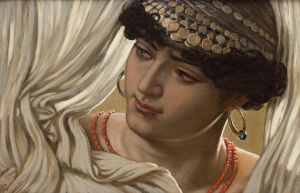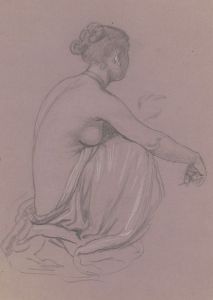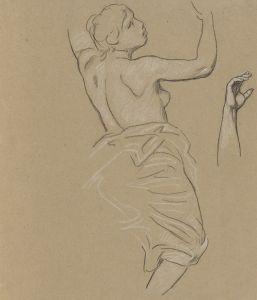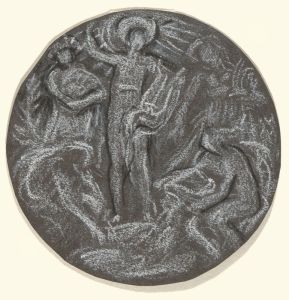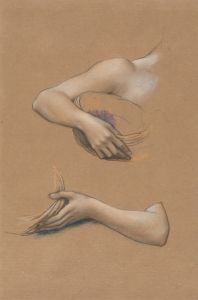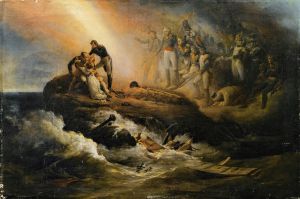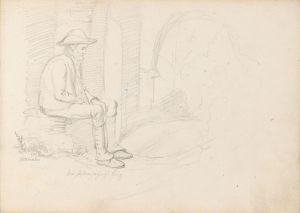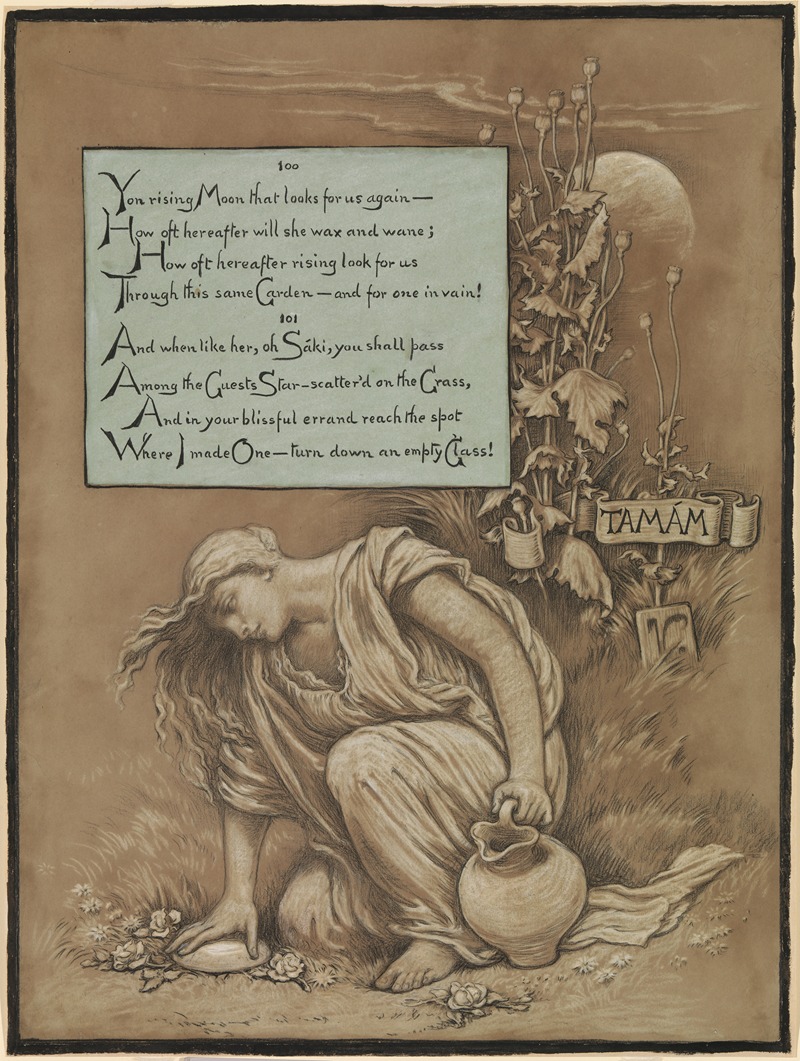
In Memoriam
A hand-painted replica of Elihu Vedder’s masterpiece In Memoriam, meticulously crafted by professional artists to capture the true essence of the original. Each piece is created with museum-quality canvas and rare mineral pigments, carefully painted by experienced artists with delicate brushstrokes and rich, layered colors to perfectly recreate the texture of the original artwork. Unlike machine-printed reproductions, this hand-painted version brings the painting to life, infused with the artist’s emotions and skill in every stroke. Whether for personal collection or home decoration, it instantly elevates the artistic atmosphere of any space.
Elihu Vedder's "In Memoriam" is a notable painting created by the American symbolist artist known for his mystical and allegorical works. Vedder, born in 1836, was a prominent figure in the American art scene during the 19th century, and his works often explored themes of life, death, and the metaphysical.
"In Memoriam" was painted in 1902 and is part of Vedder's exploration of symbolic and allegorical themes. The painting reflects Vedder's interest in the spiritual and the eternal, common motifs in his body of work. Vedder was influenced by the Symbolist movement, which sought to express the ineffable and the mysterious through art, often using mythological and dream-like imagery.
The painting depicts a contemplative scene, characterized by its somber and reflective mood. Vedder's use of color and composition in "In Memoriam" is typical of his style, employing muted tones and a balanced arrangement to evoke a sense of introspection and reverence. The figures in the painting are often interpreted as representations of mourning or remembrance, aligning with the title's suggestion of memory and tribute.
Vedder's technique in "In Memoriam" showcases his skill in blending realism with symbolic elements. His attention to detail and the careful rendering of figures and backgrounds contribute to the painting's depth and emotional resonance. The work is a testament to Vedder's ability to convey complex themes through visual art, inviting viewers to ponder the deeper meanings behind the imagery.
Throughout his career, Vedder was known for his literary connections and his illustrations for literary works, most notably his illustrations for Edward FitzGerald's translation of "The Rubaiyat of Omar Khayyam." This connection to literature is evident in "In Memoriam," as the painting's title and theme suggest a narrative quality, inviting interpretations related to memory, loss, and the passage of time.
"In Memoriam" is part of Vedder's later works, created during a period when he was reflecting on his own life and legacy. This introspective quality is reflected in the painting's mood and subject matter. Vedder's work during this time often dealt with themes of mortality and the afterlife, consistent with the Symbolist movement's focus on the spiritual and the transcendent.
The painting is housed in a private collection, and while it may not be as widely recognized as some of Vedder's other works, it remains an important piece within his oeuvre. "In Memoriam" exemplifies Vedder's mastery of symbolic imagery and his ability to convey profound themes through his art.
Elihu Vedder's contributions to American art, particularly through works like "In Memoriam," highlight his role in the Symbolist movement and his enduring influence on the depiction of allegorical and mystical themes in art. His paintings continue to be studied and appreciated for their depth, complexity, and beauty.





